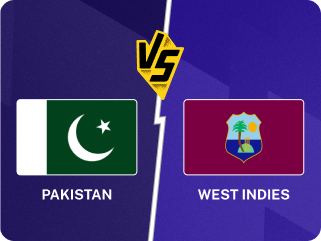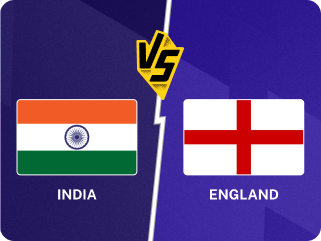
Fresh off a landmark winter, England wicketkeeper Phil Salt talks to Ben Gardner about the mindset of T20 batting and his Test ambitions.
Phil Salt is one of Wisden Cricket Monthly’s XI to watch for 2024. Subscribe now.
Phil Salt is one of Wisden Cricket Monthly’s XI to watch for 2024. Subscribe now.
Last winter, Phil Salt had his proudest moment in international cricket yet: T20I hundreds in consecutive England victories, the lone high points in a 3-2 series defeat in West Indies. “I feel like I’ve threatened to do that for a little while now in an England shirt,” he tells Wisden.
Being dropped the previous summer only made Salt’s twin tons taste all the sweeter, and with the Caribbean co-hosting this summer’s T20 World Cup, the performances were statements of intent that Salt would be leading the charge as England attempt to defend their crown.
And yet between the two knocks came a gut punch that speaks to the weird existence of life as a modern cricketer, with Salt not picked up in the Indian Premier League auction, despite impressing in his maiden season in 2023. “ I imagine that’s the sort of thing that could really consume you,” he says, “but I just chose to pay it no mind. It’s not like I’m short of somewhere for a game of cricket.”
That doesn’t mean that Salt’s averse to reflection when needed. When he bats, the impression is of a clear mind with one intention: find the boundary wherever and whenever possible. But there’s plenty that informs the approach.
“A lot of your decisions in a game, I feel like 20, 30 percent of them are going to be organic, thinking-on-your-feet decisions, but I reckon 70 percent of them, you’ve already come to that conclusion from watching the footage. You’ve already realised that this guy’s bowling big inswingers with the new ball, so I’m going to stand on leg stump and look to hit him over and through the off-side and then if he misses leg-stump he’s on my pads, and I’ve got a free swing. Or: this guy hits a hard length and moves the ball the way from me, maybe I could find a way of standing forward in my crease so that I can put him off his length.
“When I’m playing, I can’t really get cricket off the TV. It’s like, every time I turn it on, it’s all I’m watching. It sounds pretty sad, to be fair, but the more you watch certain bowlers, you are doing your homework in a way. You are picking up what they do with the ball, where they look to attack, all that sort of stuff, how they get out of their over. You can sort of watch a bowler bowl an over on TV and come to a gameplan of your own.”
Salt’s method also hides his ambitions as a batter. In some ways, he’s an analyst’s dream, the counterpoint in the anchor debate, intent converted into impact before leaving the stage for someone else to carry on his work. Since the start of last year, he averages 27 and strikes at 162 in T20 cricket. Among the 63 openers with 500 T20 runs in that time, his average of 27 is only just inside the top 50, but his strike rate is sixth in the world.
And yet he dreams of racking up big scores and Player of the Match awards. “Seventies and eighties win you games,” he says. “Twenty-four off 12, although it’s putting your team in a good position, and there’s probably someone in their team on the backfoot, you could probably question the value of how impactful that is, in the scheme of things.”
His first hundred against the West Indies was a prime example. Chasing 223 to stay in the series, Salt blasted 61 from 32 in the first 10 overs as England kept pace at 107-0. Then they lost wickets and Salt took stock, content to knock singles, adding seven off nine until the start of the 16th over. England needed 83 off the last four, and Salt charged, hitting five more sixes as he and Harry Brook sealed a classic with a ball to spare.
How then does he balance the two goals, of winning the battle in the moment and winning the game overall? In short, by viewing T20 batting not through the lens of innings construction and staging posts, but by looking at each over as a contest to be won in itself.
“I don’t think you’ll be seeing me, if I can help it, at a run-a-ball 20 too many times,” he says. “I feel like quite a lot in cricket and especially franchise cricket is almost out-thinking your opponent, looking at the stats, people finding little theories here and there about how you can beat the opposition. A lot of the time people forget that it’s a skill game. If you go out there and you bring your skill and your skill is better than the bowler of the first over’s skill, and then the bloke who bowls the second over, your skill is better than his… All of a sudden, if you start playing a game of skill, you remove so much of the distraction and theories and stats and numbers that T20 cricket is almost swimming in at the moment.”
***
This winter has seen Salt turn out in the SA20 for Pretoria Capitals before a two-game stint in the ILT20 for Desert Vipers. The churn can be head-spinning and draining. “It can be tough to switch off during a competition,” Salt admits. And so, instead of pursuing further opportunities in the Bangladesh Premier League, Salt decided to come home, back to drizzly England, to recharge for the season ahead.
“In the last week or so, every time the cricket’s been on the TV, I’ve tried to turn it off, just to sort of give myself a bit of a mental freshen up. I’m definitely not that good at sitting on the couch. You want to keep pushing your potential, but you do have a certain amount of battery level that will just run down and then if it runs out during the course of the season, you’re in massive trouble.”
Events move quickly for the modern cricketer, and you have to be prepared to switch back on at any time. Not long after speaking to Wisden, Salt is signed up as a replacement player in the IPL, filling in for Jason Roy at Kolkata Knight Riders. He had been eyeing up a six-game red-ball stint before England’s T20 World Cup prep began in earnest. Instead, county cricket won’t see him until July.
🚨 NEWS 🚨
KKR name Phil Salt as replacement for Jason Roy.
Details 🔽 #TATAIPL | @KKRiders https://t.co/KjezlTn4b8
— IndianPremierLeague (@IPL) March 10, 2024
Still, for Salt, the County Championship is more than mere consolation. Perhaps surprisingly, Salt is a red-ball tragic. He’s made his name as one of T20 cricket’s prime fast starters, hitting out or getting out with abandon. But it turns out there’s little he likes more than a chance to just bat.
“I remember my first game back last year after the IPL, it was against Hampshire at Southport, and I opened that game. And I reckon I’ve been out there for an hour and a half, two hours, something like that, and I was just like, this is so nice. Honestly, I was out there going, I’ve got time, I can play when I want to, I can adjust my tempo how I want, I’m under absolutely no pressure whatsoever.” Salt made 103 from 139, and Lancashire won by six wickets.
There are cricketers with Salt’s talent and opportunities who would have chosen to spurn the red ball altogether, with white-ball contracts increasingly common, even in the infancies of their careers. But that has never been on his mind. He feels that, for many of those who do choose that route, that part of the motivation is that they’re “not very good at red-ball”, whereas for him, batting in the longer format advances, rather than diminishes, his short-form skills.
“I love going back to red-ball because it’s the best thing for your technique,” he says. “If you can score runs in red-ball, and you’ve got some sort of power game, then you can score runs in white-ball. That is very easily transferable. But you can’t say the same vice versa.”
There are pure red-ball ambitions too. “I may not be spoken about as much as I’d like to be in Test cricket, but that’s always been the aim for me. I want to keep pushing my case.”
It’s narrow, but you feel there is a route for Salt into the Test team. Neither Ben Foakes nor Jonny Bairstow, England’s two regular glovemen in recent years, reached fifty on England’s tour of India. Upstarts like Jamie Smith and James Rew may need a few more years to mature. Durham’s Ollie Robinson will need to conquer the top tier challenge this season. Commitments elsewhere have stopped Salt from putting up an imposing season’s run tally, but he averaged 43 in first-class cricket for Lancashire in 14 games across 2022 and 2023, striking at 70 as he did so.
“I feel like I’ve got a game that’s suited to the current style of the Test team,” Salt says. “My scoring areas change [between red- and white-ball cricket] but technically and set-up wise, everything stays the same. What the England Test team are doing now is the stuff that some coaches tried to coach out of me, telling me to not be positive and stand there and block the ball for half a session, and I’ve never done that. I feel like I’d be one of the most natural fits for it, being honest.”
Such is the schedule that Salt’s County Championship schedule for 2024 might already be limited to two games. He will jump straight into the T20 World Cup from the IPL via a T20I series against Pakistan, and if England trouble the latter stages he will miss the mid-summer four-day games as well. Then it’s a T20 Blast block and The Hundred, with two Championship games between that and England’s home white-ball summer. If Brendon McCullum is to come calling this summer, it will be on the evidence already available, or on work produced in other formats. The next few months against the white ball could yet tilt his case to face the red.








